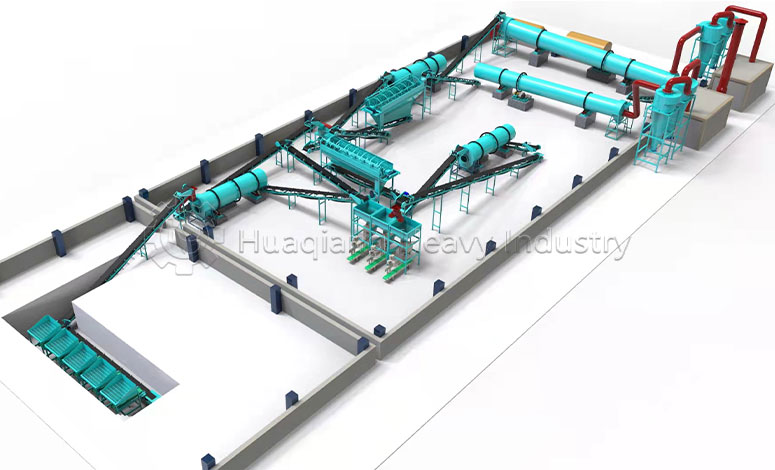Agricultural byproducts like mushroom residue and bagasse serve as excellent raw materials for organic fertilizer production lines. These nutrient-rich waste materials are incorporated into the organic fertilizer production process through composting, where they decompose into stable organic matter. This connection transforms agricultural waste into valuable fertilizer while solving environmental disposal problems, creating a circular economy model in agri-processing industries.

Raw Material Characteristics
Agricultural processing byproducts such as mushroom residue and bagasse have unique physical and chemical properties as organic fertilizer raw materials:
| Material Type | C/N Ratio | Moisture Content | Main Components |
| Mushroom Residue | 25-35:1 | 60-70% | Lignin, cellulose, residual mycelium protein |
| Bagasse | 80-100:1 | 45-55% | Cellulose, hemicellulose, small amount of sugar |
These materials typically contain abundant organic matter (40-70%), but direct application may lead to soil microorganisms competing with crops for nitrogen sources, thus requiring proper treatment [1].
Pretreatment Requirements
To ensure product quality and production efficiency, these materials require the following pretreatment steps:
- Crushing:Reduce material size to 3-5cm particles to increase surface area for fermentation
- Moisture Adjustment:Control moisture content between 50-60%, add auxiliary materials (like straw) if too high
- C/N Ratio Adjustment:For high C/N ratio materials like bagasse, add nitrogen sources (such as livestock manure) to adjust to 25-30:1
- Sterilization:Especially for mushroom residue, high-temperature treatment is needed to kill residual fungi and pathogens
Suitable Production Line Features
Considering these material characteristics, ideal organic fertilizer production lines should have the following features:
- Powerful Crushing System:Equipped with multi-stage crushers for fibrous materials
- Efficient Mixing Device:Ensures uniform mixing of materials and conditioners
- Intelligent Control System:Real-time monitoring and adjustment of temperature, humidity, oxygen, etc.
- Special Fermentation Equipment:Trough or tower fermentation system with turning devices
- Flexible Configuration:Adjustable process parameters for different material characteristics
Our company’s third-generation intelligent organic fertilizer production line is particularly suitable for processing various agricultural byproducts. Equipped with advanced sensor systems and automated control modules, it can significantly improve production efficiency and product quality.
Production Considerations
Special attention is required when using these materials for organic fertilizer production:
- Regularly test heavy metal content, especially for bagasse from industrial areas
- Mushroom residue may carry pesticide residues and requires strict testing
- Maintain sufficient oxygen supply during fermentation to prevent anaerobic odor production
- Conduct maturity testing on finished products to avoid secondary fermentation after application





